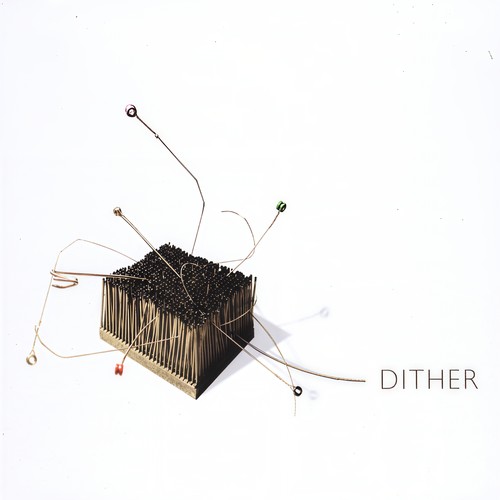
Dither
Eliiott Sharp's liner notes:
Memories of the Ed Sullivan show in the mid-1960's juxtapose the Beatles/Stones with The Romeros: a classical guitar quartet of great virtuosity but kitschy presence trumped by teenage sexual energy. The common element: guitars. The difference: acoustic vs electric, high art vs low. The battle lines were drawn and I knew instantly on which sides of the barricades I would fight. The flaming sword was the electric guitar: loud, twangy, and, best of all, distorted: the bane of the audio spectrum. The transformation of the heights of Apollonian grandeur into dirty Dionysian ecstasy was the goal. Cool vs Hot; passion sublimated vs passion unleashed. The Head vs the Body. More parallels and dipoles: Jimi Hendrix feedback symphonies and Stockhausen's Mikrophonie. Ornette Coleman's Skies Of America and Xenakis' Bohor. Cecil Taylor's Conquistador and the Grosse Fuge. Trout Mask Replica and Black Angels. Charges of equal weight with polarities defined by different worlds: the street and the academy. But there the battle ends because for the listener with open ears, there is no separation, no opposition, just the glory of saturated spectra and intensity of myriad colors.
The quartet concept: the gravitas of four corners, circle in square, life cubed and balanced. The string quartet is one of the great Ur Ensembles. Like the classic rock power trio or brass choir or woodwind quintet, certain groupings of instruments make so much sense, are so inevitable, that they serve as sonic DNA. It takes only a small conceptual leap from string quartet to guitar quartet and the latter offers certain textural pleasures that are not to be found in the arco world (& vice versa!). In my own work I've been pulled into the guitar quartet vortex for years, beginning in 1977 with the Other Buffalo Guitar Quartet inspired by a cross-breeding of Ligeti, gamelan, Art Ensemble of Chicago, and a vision of free rock improvisation. Later in New York, it was Gx4 in '92 and The Dyners Club in '94, engendering a search for a balance between compositional rigor and improvisational abandon, for a music that pays homage to the history of the instrument while trashing it completely in the service of never-before-heard-it-tude, a process encompassing new strategies and timbres and a willingness to start from scratch.
This process is clear in Dither's album of beautifully violent strangeness. Focus on the word “dither” and its multiple usages: a method of synthesizing intermediate colors normally unavailable by superimposing dot patterns; and better: intentionally applying forms of noise to eliminate quantization error manifested as drop-outs or uncorrelated noise. Our physical ears want that correlated noise; our inner ears want to create illusive representations out of the reality that's offered to us. The 15th century origin of the current word is “didderen”-- to quake or tremble. Implied is an agitated state: the perfect implication for multiple electric guitars shaped by five young composers who each fill a unique soundworld with methods and sounds that glow with high-contrast hyperreality. These composers have not been brainwashed in the ivory tower mentality. The ruthless attack, biting tones, full-on intensity, and rhythmic acuity are typical of a new generation of composers fluent in the entire history of Western music yet more strongly resonating with noise, punk, hip-hop, non-Western musics, and post-Cagean approaches. The compositions and performances on this CD speaks to those of us who hunger for more in music than pleasantries and who know that there IS always MORE and are willing to dig in to find it. Diddere!
